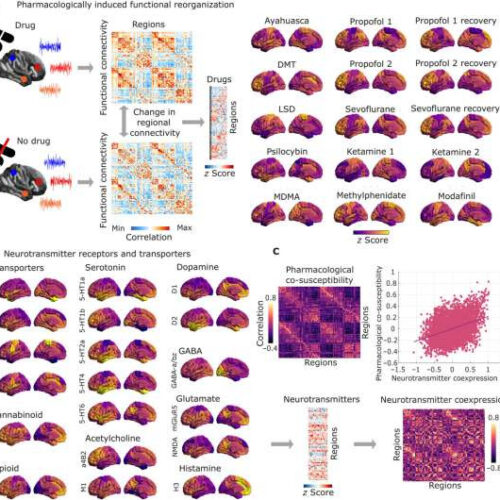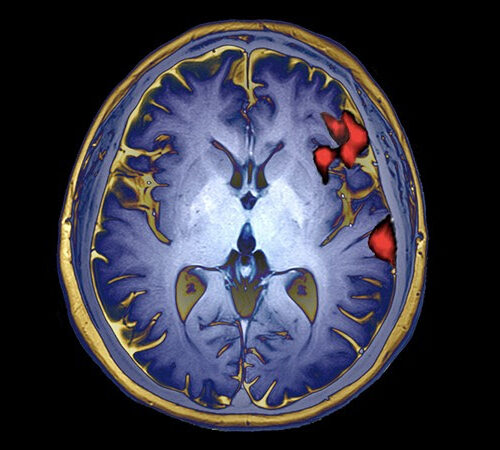September 5, 2024 by University of California – San Diego These brain scans show different neural signatures associated with pain response: the NAPS (left) is associated with the emotional experience of pain, the SIIPS-1 (center) is related to our expectations of pain and other psychosocial factors, and the NPS (right) is associated with pain intensity....
Tag: <span>brain scans</span>
Using brain scans of people on mind-altering drugs to learn more about neurotransmitter systems
by Bob Yirka , Medical Xpress Overview of receptors and pharmacological rs-fMRI data. (A) For each psychoactive drug, its pattern of pharmacologically induced functional reorganization is quantified as the average (across subjects) of the within-subject difference in regional FC weighted degree (sum of each region’s positive connections) between task-free fMRI scans at baseline and under...
Functional, nonepileptic seizures show structural abnormalities in brain scans, study shows
MICHIGAN MEDICINE – UNIVERSITY OF MICHIGAN There are just over 3 million Americans with epilepsy who experience seizures due to abnormal electrical activity in the brain. A smaller group of people also have seizures not caused by epilepsy – known by many names, including functional seizures, psychogenic seizures, nonepileptic seizures, or even the pejorative term...
Brain scans reveal the hidden shape of thinking and predict students’ learning better than test scores
by Georgetown University Georgetown students gather around a computer during a Biology lab. Credit: Georgetown University The traditional tests and grades that educators have long used may measure learning less accurately than scans of the brain, according to a new study published in Science Advances. The paper, authored by a team of researchers from seven universities and...
Can brain scans reveal behaviour? Bombshell study says not yet
Ewen Callaway A scan using functional magnetic resonance imaging, or fMRI, shows areas of the brain active during speech. Credit: Zephyr/Science Photo Library In 2019, neuroscientist Scott Marek was asked to contribute a paper to a journal that focuses on child development. Previous studies had shown that differences in brain function between children were linked with performance...
Study of Gene’s Hormone Effects Leads to Surprise Insight into Pituitary Tumors
Rathke’s cleft cysts are benign, fluid-filled growths that develop in the pituitary gland, a small oval-shaped gland near the underside of the brain. Usually, these cysts don’t cause symptoms. However, if they become large enough to compress the organ and surrounding tissues, then they can cause problems with vision and the secretion of hormones from...
Biomarker for schizophrenia can be detected in human hair
RIKEN Working with model mice, post-mortem human brains, and people with schizophrenia, researchers at the RIKEN Center for Brain Science in Japan have discovered that a subtype of schizophrenia is related to abnormally high levels hydrogen sulfide in the brain. Experiments showed that this abnormality likely results from a DNA-modifying reaction during development that lasts throughout life. In addition to...
Brain scans yield more clues to autism
July 17, 2018, by Amy Norton, HealthDay Reporter (HealthDay)—Children with autism show abnormalities in a deep brain circuit that typically makes socializing enjoyable, a new study finds. Using MRI brain scans, researchers found that kids with autism showed differences in the structure and function of a brain circuit called the mesolimbic reward pathway.That circuit, located...
Scientists can predict intelligence from brain scans
If you’ve ever lied about your IQ to seem more intelligent, it’s time to fess up. Scientists can now tell how smart you are just by looking at a scan of your brain. Actually, to be more precise, the scientists themselves aren’t looking at your brain scan; a machine-learning algorithm they’ve developed is. In a...





